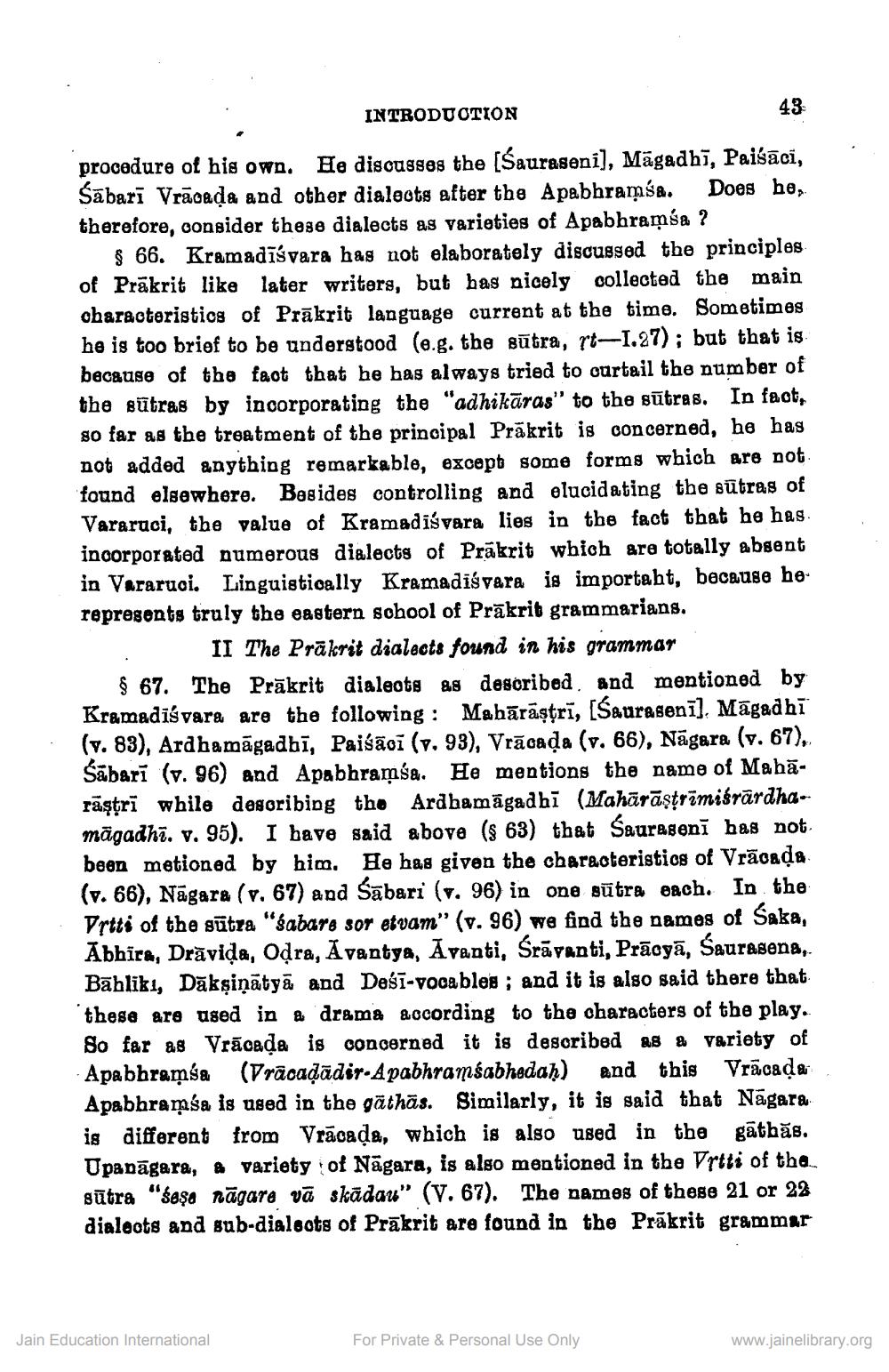________________
INTRODUCTION
Jain Education International
procedure of his own. He discusses the [Sauraseni], Magadhī, Paiśāci, Sabari Vracaḍa and other dialects after the Apabhramsa. Does he, therefore, consider these dialects as varieties of Apabhramsa ?
§ 66. Kramadisvara has not elaborately discussed the principles. of Prakrit like later writers, but has nicely collected the main characteristics of Prakrit language current at the time. Sometimes he is too brief to be understood (e.g. the sutra, rt-1.27); but that is because of the fact that he has always tried to curtail the number of the sutras by incorporating the "adhikaras" to the sutras. In fact, so far as the treatment of the principal Prakrit is concerned, he has not added anything remarkable, except some forms which are not. found elsewhere. Besides controlling and elucidating the sutras of Vararuci, the value of Kramadiśvara lies in the fact that he has. incorporated numerous dialects of Prakrit which are totally absent in Vararuci. Linguistically Kramadiśvara is importaht, because he represents truly the eastern school of Prakrit grammarians.
II The Prakrit dialects found in his grammar
$67. The Prakrit dialects as described, and mentioned by Kramadisvara are the following: Mahārāṣṭrī, [Saurasenī], Māgadhī (v. 83), Ardhamaāgadhī, Paiśācī (v. 93), Vracaḍa (v. 66), Nagara (v. 67), Sabari (v. 96) and Apabhramsa. He mentions the name of Maharaştri while describing the Ardhamagadhi (Mahārāṣṭrīmiśrardhamāgadhi. v. 95). I have said above (§ 63) that Śauraseni has not been metioned by him. He has given the characteristics of Vracada. (v. 66), Nagara (v. 67) and Sabari (v. 96) in one sutra each. In the Vrtti of the sutra "sabare sor etvam" (v. 96) we find the names of Saka, Abhira, Draviḍa, Oḍra, Avantya, Avanti, Śravanti, Pracyā, Saurasena, Bahliki, Dākṣiņatya and Desi-vocables; and it is also said there that these are used in a drama according to the characters of the play. So far as Vracada is concerned it is described as a variety of Apabhramsa (Vracaḍādir-Apabhramsabhedaḥ) and this Vracada Apabhramsa is used in the gathās. Similarly, it is said that Nagara is different from Vracaḍa, which is also used in the gathās. Upanagara, a variety of Nagara, is also mentioned in the Vrtti of the sutra "seşe nagare vā skādau" (V. 67). The names of these 21 or 22 dialects and sub-dialects of Prakrit are found in the Prakrit grammar
43
For Private & Personal Use Only
www.jainelibrary.org




